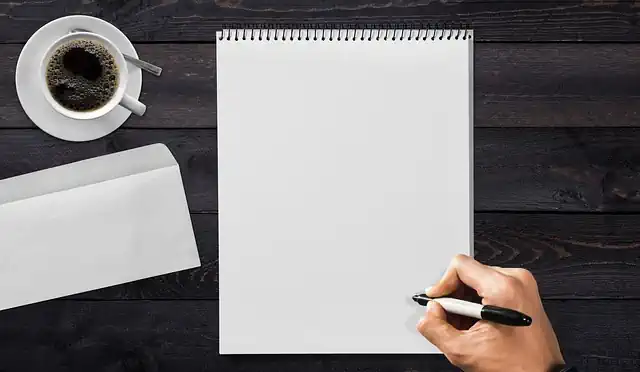Best Side Hustles For Artists
Introduction


As an AI language model, I do not have personal experiences or opinions. However, I can provide information on the topic of best side hustles for artists. Many artists struggle to make a living solely from their art, which is why having a side hustle can be beneficial. In this article, we will explore some of the best side hustles for artists to help supplement their income.
Selling Art Online: Tips and Tricks
As an artist, it can be challenging to make a living solely from your art. That’s why many artists turn to side hustles to supplement their income. One of the most popular side hustles for artists is selling their art online. In this article, we’ll share some tips and tricks for selling art online and highlight some of the best side hustles for artists.
First and foremost, it’s essential to have a strong online presence. This means having a website or online portfolio that showcases your work. Your website should be easy to navigate and visually appealing. It’s also a good idea to have an online store where customers can purchase your art directly from your website.
Social media is another crucial component of your online presence. Platforms like Instagram and Facebook are great for sharing your work and connecting with potential customers. Make sure to use relevant hashtags and engage with your followers to build a community around your art.
When it comes to selling your art online, there are several platforms to choose from. Etsy is a popular choice for artists, as it’s a marketplace specifically for handmade and vintage items. It’s easy to set up a shop on Etsy, and the platform takes care of payment processing and shipping.
Another option is to sell your art on your own website using a platform like Shopify. This gives you more control over the sales process, but it also means you’ll need to handle payment processing and shipping yourself.
If you’re looking for a more passive income stream, consider selling your art on print-on-demand sites like Society6 or Redbubble. These sites allow you to upload your designs, and they handle the printing and shipping. You earn a commission on each sale, but keep in mind that the profit margins are lower than if you were selling your art directly.
In addition to selling your art online, there are other side hustles that can help supplement your income as an artist. One option is to teach art classes or workshops. You can offer in-person classes in your community or teach online through platforms like Skillshare or Udemy.
Another option is to offer freelance design services. Many businesses and individuals need graphic design work done, and as an artist, you have the skills to create beautiful designs. You can offer services like logo design, website design, or social media graphics.
Finally, consider selling art supplies or creating art-related products. If you have a particular skill or expertise, you can create tutorials or e-books to sell online. You can also sell physical products like art prints, stickers, or even clothing with your designs on them.
In conclusion, selling art online is a great side hustle for artists, but it’s important to have a strong online presence and choose the right platform for your needs. Additionally, there are other side hustles that can help supplement your income as an artist, such as teaching art classes or offering freelance design services. With a little creativity and hard work, you can turn your passion for art into a profitable side hustle.
Freelance Graphic Design: How to Get Started
Are you an artist looking to make some extra cash? Freelance graphic design might be the perfect side hustle for you. With the rise of digital media, there is a high demand for visually appealing content. Here are some tips on how to get started in freelance graphic design.
First, build your portfolio. Your portfolio is your chance to showcase your skills and style. It should include a variety of projects that demonstrate your ability to create logos, business cards, flyers, and other marketing materials. If you don’t have any previous work to show, consider creating some mock projects to add to your portfolio.
Next, set your rates. It’s important to determine how much you want to charge for your services. Research what other freelance graphic designers in your area are charging and adjust your rates accordingly. Keep in mind that you may need to adjust your rates as you gain more experience and build your reputation.
Once you have your portfolio and rates set, it’s time to start marketing yourself. Utilize social media platforms like Instagram and Twitter to showcase your work and reach potential clients. You can also create a website to display your portfolio and make it easier for clients to find you.
Networking is also important in the freelance world. Attend local events and meetups to connect with other artists and potential clients. You never know who you might meet and what opportunities may arise.
When you do land a client, make sure to communicate clearly and professionally. Set expectations for the project timeline and deliverables. It’s also important to be open to feedback and revisions. Remember, the client’s satisfaction is key to building a good reputation and gaining repeat business.
Finally, don’t forget about the legal side of freelance graphic design. Make sure to have a contract in place that outlines the scope of the project, payment terms, and ownership of the final product. It’s also important to protect your intellectual property by trademarking your designs and registering your business.
Freelance graphic design can be a lucrative side hustle for artists. By building a strong portfolio, setting your rates, marketing yourself, networking, communicating professionally, and protecting your legal rights, you can turn your passion for art into a profitable business.
Art Commissions: Finding Clients and Setting Prices
As an artist, it can be challenging to make a living solely from your art. That’s why many artists turn to side hustles to supplement their income. One of the most popular side hustles for artists is art commissions. In this article, we’ll discuss how to find clients and set prices for your art commissions.
Finding Clients
The first step in getting art commissions is finding clients. There are several ways to do this:
1. Social Media: Social media platforms like Instagram, Facebook, and Twitter are great places to showcase your art and connect with potential clients. Make sure to use relevant hashtags and engage with your followers to increase your visibility.
2. Online Marketplaces: Websites like Etsy, Society6, and Redbubble allow artists to sell their art and offer commission services. These platforms have a built-in audience, making it easier to find clients.
3. Local Art Shows: Participating in local art shows and events is a great way to meet potential clients and showcase your art. Make sure to bring business cards and promotional materials to hand out to interested parties.
Setting Prices
Once you’ve found clients, it’s important to set prices that are fair to both you and the client. Here are some factors to consider when setting prices:
1. Time and Materials: Consider how much time and materials will go into creating the piece. This includes the cost of supplies, as well as the time it takes to create the piece.
2. Complexity: The more complex the piece, the higher the price should be. This includes factors like the number of subjects in the piece, the level of detail, and the size of the piece.
3. Experience: If you’re an experienced artist with a strong portfolio, you can charge more for your work. However, if you’re just starting out, it’s important to be realistic about your prices.
4. Market Demand: Consider the demand for your art in the market. If there’s a high demand for your style of art, you can charge more for your work.
It’s important to be transparent with your clients about your pricing. Make sure to provide a detailed breakdown of the costs involved in creating the piece, so the client understands what they’re paying for.
In conclusion, art commissions are a great way for artists to supplement their income. By using social media, online marketplaces, and local art shows to find clients, and considering factors like time and materials, complexity, experience, and market demand when setting prices, artists can successfully navigate the world of art commissions.
Teaching Art: Hosting Workshops and Classes
As an artist, it can be challenging to make a living solely from your art. That’s why many artists turn to side hustles to supplement their income. One of the best side hustles for artists is teaching art by hosting workshops and classes.
Teaching art is a great way to share your skills and knowledge with others while also earning some extra cash. Plus, it can be a lot of fun! Here are some tips for getting started with hosting your own art workshops and classes.
First, decide what kind of class you want to teach. Do you specialize in a particular medium, such as painting or drawing? Or do you have a unique skill or technique that you want to share with others? Once you have a clear idea of what you want to teach, you can start planning your class.
Next, think about where you want to host your class. Do you have a studio or workspace that you can use? Or do you need to rent a space? You’ll also need to consider the logistics of setting up your class, such as tables, chairs, and art supplies.
Once you have your class planned and your space secured, it’s time to start promoting your class. You can use social media, email newsletters, and word of mouth to spread the word about your class. Be sure to include all the important details, such as the date, time, location, and cost.
When it comes to pricing your class, you’ll need to consider your expenses, such as rent, supplies, and marketing. You’ll also want to factor in your time and expertise. Don’t undervalue yourself – your skills and knowledge are valuable!
During your class, be sure to create a welcoming and supportive environment for your students. Encourage them to ask questions and experiment with different techniques. Provide plenty of one-on-one feedback and guidance to help them improve their skills.
After your class is over, be sure to follow up with your students. Ask for feedback and suggestions for improvement. You can also offer additional resources, such as online tutorials or recommended reading materials.
Teaching art can be a rewarding and profitable side hustle for artists. Not only does it allow you to share your skills and knowledge with others, but it also provides a steady source of income. With some planning and preparation, you can create a successful art workshop or class that will benefit both you and your students.
Artisanal Crafts: Making and Selling Handmade Goods
Are you an artist looking for a way to make some extra cash? One of the best side hustles for artists is making and selling handmade goods. With the rise of the maker movement and the popularity of artisanal crafts, there is a growing demand for unique, handmade items. Here are some tips and ideas for making and selling your own handmade goods.
First, decide what type of handmade goods you want to make. Do you enjoy knitting, crocheting, or sewing? Are you skilled at woodworking, pottery, or jewelry making? Whatever your craft, there is likely a market for it. Consider what types of items are popular in your area or online, and what materials you have access to.
Once you have decided on your craft, start practicing and perfecting your skills. Take classes or watch tutorials online to learn new techniques and improve your craft. Experiment with different materials and designs to find what works best for you.
Next, set up a workspace where you can create your handmade goods. This could be a spare room in your home, a corner of your garage, or a rented studio space. Make sure you have all the necessary tools and supplies, and keep your workspace organized and clean.
Now it’s time to start selling your handmade goods. There are many ways to do this, depending on your preferences and resources. You could sell your items online through platforms like Etsy or Amazon Handmade, or through your own website or social media accounts. You could also sell your items at local craft fairs, farmers markets, or pop-up shops.
When selling your handmade goods, it’s important to price them appropriately. Consider the cost of materials, the time it takes to make each item, and any overhead costs like rent or website fees. Don’t undervalue your work, but also be mindful of what customers are willing to pay.
To attract customers, make sure your handmade goods are well-made and visually appealing. Take high-quality photos of your items and write detailed descriptions that highlight their unique features. Consider offering customization or personalization options to make your items even more special.
Finally, don’t be afraid to promote your handmade goods and yourself as an artist. Share your work on social media, attend networking events, and collaborate with other artists and makers. Building a strong brand and community around your handmade goods can help you grow your business and reach new customers.
In conclusion, making and selling handmade goods is a great side hustle for artists. With some practice, a dedicated workspace, and a strong marketing strategy, you can turn your passion for crafting into a profitable business. So get creative, start making, and see where your handmade goods can take you!
Photography: Monetizing Your Passion
Are you an artist looking for ways to monetize your passion for photography? Look no further! There are plenty of side hustles that can help you turn your love for capturing moments into a profitable venture.
One of the most popular side hustles for photographers is selling prints of your work. With the rise of online marketplaces like Etsy and Society6, it’s easier than ever to set up shop and start selling your prints. You can also sell your prints at local art fairs and markets, or even approach local businesses about displaying your work in their offices or storefronts.
Another option is to offer your services as a photographer for events like weddings, parties, and corporate events. This can be a great way to earn some extra cash while also building your portfolio and gaining experience. You can advertise your services on social media or through word of mouth, and even partner with other vendors in the event industry to expand your reach.
If you’re interested in teaching others about photography, you can also offer workshops or classes. This can be a great way to share your knowledge and skills with others while also earning some extra income. You can offer classes in person or online, and even partner with local community centers or schools to reach a wider audience.
Another option is to offer your services as a freelance photographer for businesses and brands. Many companies are in need of high-quality photos for their websites, social media, and marketing materials, and are willing to pay for them. You can reach out to businesses in your area or even pitch your services to larger companies online.
Finally, you can also consider licensing your photos for use in stock photography. This can be a great way to earn passive income from your photos, as they can be used by a variety of businesses and individuals for a range of purposes. You can submit your photos to stock photography websites like Shutterstock or Getty Images, or even create your own website to sell your photos directly to customers.
No matter which side hustle you choose, it’s important to remember that building a successful photography business takes time and effort. You’ll need to invest in high-quality equipment, build a strong portfolio, and market your services effectively in order to attract clients and customers. But with dedication and hard work, you can turn your passion for photography into a profitable venture that allows you to do what you love while also earning a living.
Writing About Art: Starting a Blog or Freelance Writing Career
As an artist, it can be challenging to make a living solely from your art. That’s why many artists turn to side hustles to supplement their income. One of the best side hustles for artists is writing about art. Whether you start a blog or pursue a freelance writing career, writing about art can be a fulfilling and lucrative way to use your skills.
Starting a blog is a great way to share your thoughts and opinions about art with the world. You can write about your own art, review exhibitions, or discuss trends in the art world. The possibilities are endless. To start a blog, you’ll need to choose a platform, such as WordPress or Squarespace, and create a website. You’ll also need to come up with a name for your blog and decide on a niche. Once you’ve set up your blog, you can start writing and sharing your posts on social media to attract readers.
If you’re interested in pursuing a freelance writing career, there are many opportunities to write about art. You can pitch articles to art magazines, websites, and blogs. You can also write exhibition reviews for local newspapers or online publications. To get started, you’ll need to create a portfolio of your writing samples and start networking with editors and other writers in the art world.
One of the benefits of writing about art is that it can help you develop your critical thinking skills. When you write about art, you need to analyze and interpret the work, which can help you become a better artist yourself. Writing about art can also help you build your reputation in the art world. If you write insightful and engaging articles, people will start to take notice and seek out your opinions.
Another benefit of writing about art is that it can be a flexible and rewarding career. You can work from home, set your own hours, and choose the projects that interest you. You can also earn a decent income from writing about art, especially if you specialize in a particular niche or have a unique perspective.
Of course, there are also challenges to writing about art. It can be difficult to find paying gigs, and the competition can be fierce. You’ll also need to be able to write well and have a deep understanding of art history and theory. However, if you’re passionate about art and willing to put in the work, writing about art can be a fulfilling and lucrative side hustle.
In conclusion, writing about art is one of the best side hustles for artists. Whether you start a blog or pursue a freelance writing career, writing about art can help you develop your critical thinking skills, build your reputation in the art world, and earn a decent income. While there are challenges to writing about art, the rewards can be significant. So if you’re an artist looking for a side hustle, consider writing about art. Who knows, it might just become your main hustle one day.
Conclusion
Conclusion: In conclusion, there are many side hustles available for artists to earn extra income. Some of the best options include selling artwork online, teaching art classes, freelancing as a graphic designer or illustrator, and creating custom commissions. It’s important for artists to find a side hustle that aligns with their skills and interests, and to market themselves effectively to attract clients. With dedication and hard work, artists can turn their passion into a profitable side business.







